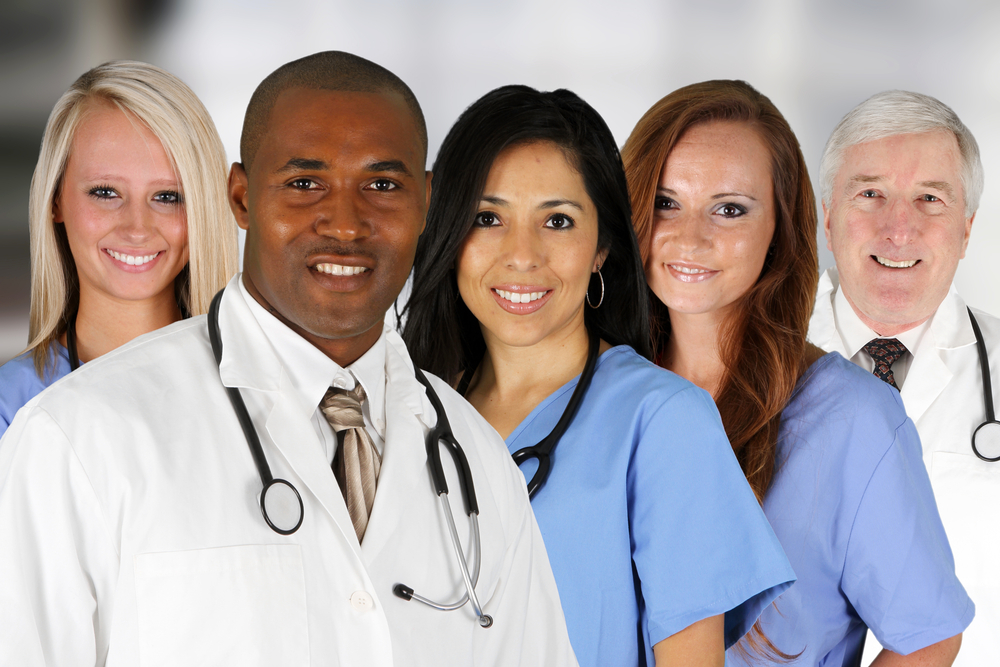
Written by By Isaac Smith
Healthcare counselors must balance professional duties and client welfare to make ethical decisions. Avoiding harm and respecting client rights are emphasized in ACA, APA, and NAADAC ethical codes. This means avoiding inappropriate dual relationships, obtaining and documenting informed consent, and promoting client autonomy and self-determination. When faced with dilemmas, counselors must consult codes and supervisors, weigh risks and benefits, and prioritize client interests. We discuss each area below, using real cases to demonstrate challenges, best practices, and consequences for mistakes.
Dual Relationships: Boundaries and Risks
Dual relationships occur when a counselor has a significant professional or personal relationship with a client outside of therapy. The ethical code discourages dual roles whenever possible. The ACA and NAADAC Codes state that “counselors should take all possible steps to avoid engaging in dual-client relationships” because they “can undermine the fiduciary responsibility” to clients.
APA guidelines advise counselors and psychologists to avoid multiple relationships that could compromise objectivity, competence, or effectiveness or risk client exploitation. Any dual role can bias the counselor’s judgment, confuse roles, erode trust, or exploit.
In small or rural communities, dual relationships may be unavoidable. Counselors must assess risks and prevent harm or exploitation in such cases. Setting and communicating clear boundaries, getting the client’s informed consent to role changes, seeking supervision or consultation, and documenting the decision process are key. Extension of any professional boundary (e.g., buying a service from a client or attending a personal event) requires informed consent, supervision, and careful documentation to “ensure that judgment is not impaired and no exploitation occurs” (ACA Code Section A.6). In conclusion, counselors should ask “Is it truly necessary, and can I remain objective?” before taking on any secondary role and regularly assess the client’s impact.
Modern tools like a Random Word Generator can even play a subtle role in ethical reflection and training exercises. During professional workshops or counseling education programs, instructors sometimes use random verb generators to prompt spontaneous discussion about ethics, boundary management, or decision-making. For example, if the generator produces words like “trust,” “boundaries,” or “objectivity,” these can spark meaningful reflection on how counselors apply these principles in complex cases.
Best practices:
When possible, counselors should avoid multiple relationships. They should (1) assess and document risks vs. benefits, (2) set clear boundaries from the start, (3) obtain and revisit the client’s informed consent to any boundary extension, (4) seek regular consultation/supervision, and (5) thoroughly document each decision and client communication if a dual role is unavoidable Counselors should obtain explicit consent and consult colleagues before attending client graduations or business arrangements (ACA A.6.b and NAADAC I-11). All ethical codes prohibit them from having sexual or romantic relationships with current clients (and possibly former clients for years).
Consequences of missteps:
These standards can be violated with dire consequences. Counselors risk disbarment and legal liability in addition to harming clients. For boundary violations, state boards have placed counselors on probation or suspended their licenses. Malpractice suits and ethics complaints can cost counselors tens or hundreds of thousands of dollars in defense or settlement. Inappropriate dual relationships can ruin a counselor’s career and public trust.
Informed Consent: Transparency and Understanding
Informed consent educates clients about counseling so they can make voluntary, informed decisions. Ethical codes require this. ACA Code (2014) states: “Counselors must review in writing and verbally with clients the rights and responsibilities of both counselors and clients. Informed consent is documented throughout counseling. APA Code Standard 3.10 requires psychologists (including counselors) to obtain informed consent in client-friendly language. NAADAC’s code also requires providers to communicate consent clearly using culturally and developmentally appropriate language and noting comprehension issues.
Counselors should discuss therapy’s purpose and goals, techniques and interventions, potential risks or side effects, fees/insurance, confidentiality limits, and alternative resources at intake and throughout counseling. This should be explained verbally and in writing (consent form or brochure). Clients should ask questions and give meaningful consent. Counselors must get assent and guardian permission from minors and disabled adults as well as involve them in decisions. Counselors must disclose mandated treatment (e.g., court-ordered counseling) and confidentiality limits at the outset.
Best practices:
Adapting to clients’ developmental and cultural contexts, counselors should explain counseling in plain language. They should explicitly cover service refusal and its consequences. Consent should be documented (signed forms, progress notes referencing discussions) and reviewed if treatment changes. Visuals, translators, and simplified summaries help clients with different language or literacy levels understand. Have clients paraphrase their understanding. Counselors should disclose risks (e.g., mandated treatment) to others (ACA B.1.a and NAADAC II-7).
Consequences of missteps:
Failure to obtain and document consent can violate clients’ legal and ethical rights. If clients discover unsaid limits of confidentiality or costs, they may feel confused, betrayed, or coerced. Formal complaints or malpractice claims can result from informed consent violations. Courts and licensing boards often side with clients who were not fully informed about the counseling relationship or risks. Counselors without informed consent may be fined or suspended in extreme cases.
Client Autonomy: Respect and Self-Determination
Respecting client autonomy means letting them make life and treatment decisions. It underpins counseling and healthcare ethics. The APA’s General Principles require psychologists and counselors to respect “the rights of individuals to privacy, confidentiality, and self-determination.” Likewise, the ACA Code emphasizes that clients’ freedom of choice should be respected in counseling plans. Even if clients refuse treatment in mandated settings, counselors must explain the consequences “while respecting the client’s rights to autonomy and self-determination” (NAADAC code).
Promoting autonomy means fully involving clients in decision-making. Counselors explain all reasonable options, discuss pros and cons, and ask about client values and preferences. Clients can choose alternative therapies, set goals, or decline interventions. Safe choices should be supported by counselors. Counselors respect informed client choices, such as refusing medication or ending therapy. Counselors must also recognize that some cultures value family or community decision-making over autonomy. Instead of imposing their values, ethical counselors must assess and respect a client’s background and autonomy.
Best practices:
Through collaborative methods like motivational interviewing, counselors help clients set goals and take charge of change. They should emphasize that the client makes decisions (e.g., treatment goals, session agenda, and therapy termination).
It clarifies that clients can refuse any service or modality and discusses consequences openly as required by ACA A.2.b. Counseling should be optional, not required. Counselors solicit and value client feedback throughout treatment. Counselors must not impose their values or judgments on clients; ACA Code (Section A.4.b) prohibits this.
Consequences of missteps:
Overriding client autonomy can cause trust issues or crises. A client may drop out or feel traumatized if a counselor coerces or ignores their choices. Ignoring autonomy is unethical. ACA’s principle of client welfare and dignity is violated if a counselor fails to respect a client’s legally-supported decision, such as an adult refusing treatment. Violating autonomy can lead to malpractice claims or disciplinary action, especially if the client is harmed by inadequate decision-making.
Best Practices and Risk Management
Counselors should use ethical decision-making and risk-management to handle these situations. Strategies include:
Boundary management:
Set boundaries and roles from the start of therapy. Record outside contacts and availability. During intake, set communication boundaries (e.g., no texts after hours) and roles (e.g., individual therapy only). Document clients’ social or business invitations and the counselor’s response. Some codes, like ACA A.5.c, restrict social/romantic contact for years after termination.
Informed consent clarity:
Continuously solicit client consent. Written forms and discussions should cover treatment nature, alternatives, risks, confidentiality, and rights (including autonomy). Update consent when treatment or roles change. Client participation in goal-setting and treatment plans (NAADAC I-17) promotes understanding and self-determination.
Consultation and supervision:
Ask for help with gray-area or boundary issues. Dual relationships, consent, and cultural issues should be discussed with peers or supervisors, per ethical codes. Note consults in records. This improves care and documents ethical decisions for later reference.
Documentation:
Take notes on informed consent, boundary agreements, and major decisions. Risks, benefits, client consent, and ongoing monitoring should be documented for dual roles. Counselors can prove their good faith in audits and complaints with thorough notes.
Continual education:
Maintain ethical standards and receive training on new issues like telehealth confidentiality and social media boundaries. Codes (ACA) and case law change periodically, affecting practice. As advised, review the ACA, APA, and NAADAC codes annually and attend ethics seminars. By proactively managing these areas, counselors protect clients and maintain professional integrity.
Conclusion
Ethics in counseling requires constant vigilance. Informed consent, dual relationships, and client autonomy are central to client welfare. ACA, APA, and NAADAC recommend avoiding problematic multiple relationships, ensuring informed and ongoing consent, and empowering client self-determination. Real-world cases show that counselors who blur boundaries or ignore consent and autonomy risk harming clients and themselves.
In conclusion, counselors should set boundaries, inform clients, and respect their choices. In uncertain situations, consult ethical codes, consult colleagues, and document carefully. Counselors can handle dilemmas responsibly by using these best practices and reflecting on their values and biases. Ethics training, supervision, and self-reflection are crucial. The ACA, APA, and NAADAC’s commitment to clients’ welfare, dignity, and rights will guide counselors through even the most difficult situations.
Written by By Isaac Smith, Editorial Director Billing/coding/reimbursement specialist, CureCloudMD
Please also review AIHCP’s Health Care Ethics Consultant Certification program and see if it meets your academic and professional goals. These programs are online and independent study and open to qualified professionals seeking a four year certification



















